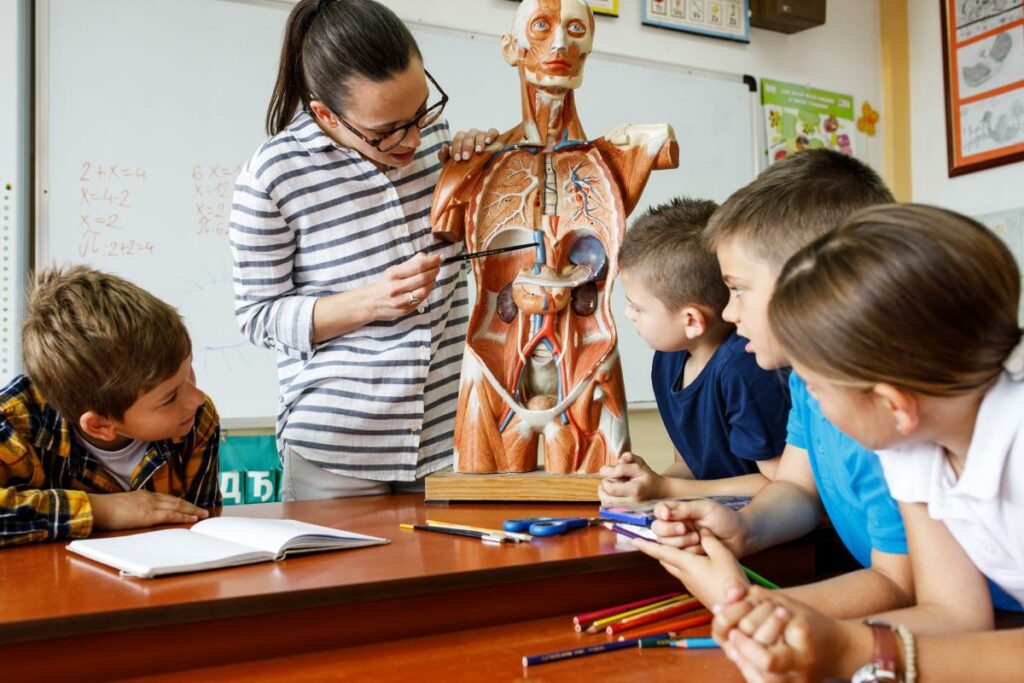Did you know that one of the most important things we can do to create a more peaceful world is empowering teachers with a global mindset? Teachers with a global perspective can help their students understand and appreciate different cultures. This can lead to a more understanding and accepting world. Education experts discuss the importance of empowering teachers with a global mindset and provide tips on how to do it.

Why Is A Global Mindset Important To Educators?
Teachers are essential in preparing students for the challenges of an increasingly globalized world. To effectively meet these challenges, teachers themselves need to develop a global mindset.
A global mindset is “a set of attitudes and beliefs that enable individuals to interact with people from other cultures with understanding and respect.” This includes an appreciation for diversity, an openness to new ideas and perspectives, and a willingness to communicate and collaborate with people from different backgrounds.
Developing a global mindset is essential for teachers because it helps them create classrooms where all students feel included and valued. It also allows them to teach their students about the interconnectedness of our world and the importance of working together to solve problems. Finally, a global mindset helps teachers build bridges between their students and the increasingly diverse community around them.
How Can Teachers Develop A Global Mindset?
Teachers can play a crucial role in developing a global mindset in their students by promoting international understanding and appreciation of cultural diversity. One way to do this is to incorporate international perspectives into the curriculum. This can be done by choosing teaching materials from various countries and cultures and exposing students to different points of view on current events and issues.
It is important for schools to understand that developing a global mindset goes beyond exchange programs or study abroad opportunities. Many of these experiences can actually do more harm than good if they are not accompanied by a robust program that incorporates intentional learning outcomes. Fostering a global mindset in students begins well before students board the airplane to experience a new country and culture.
How Should Educators Incorporate Global Mindsets Outside The Classroom?
A global mindset is not just something that should be developed in the classroom. It is also essential for educators to model a global perspective in their own lives. One way to do this is to participate in international professional development opportunities. This can help educators learn about new cultures and ways of doing things and show them the value of diversity and inclusion.
In addition, educators can get involved in community initiatives that promote international understanding. For example, they can volunteer with organizations that work with refugees or immigrants or participate in cultural exchange programs. Educators can help create a more inclusive and tolerant world by modeling a global mindset outside the classroom.
What Are The Challenges Of Developing A Global Mindset?
Developing a global mindset can present some challenges for both educators and students. One challenge is that finding appropriate teaching materials for all students can be difficult. In addition, teachers need to be skilled in facilitating uncomfortable and sensitive topics with classmates from different cultures.
Another challenge is that the world is constantly changing, and it can be difficult to keep up with current events and issues. This can make it difficult for teachers to incorporate a global perspective into their lessons. Finally, developing a global mindset requires an openness to new ideas and perspectives, which can be challenging for some people.
Despite these challenges, developing a global mindset is essential in our increasingly interconnected world. By empowering teachers with a worldwide perspective, we can create classrooms that prepare students for success in a globalized world.
Why Is Global Mindset In The Classroom Just The Beginning?
Empowering teachers with a global mindset is essential in creating inclusive classrooms and promoting international understanding. However, it is just the beginning. We must reform education at all levels to embrace a global perspective to create a more inclusive society.
This includes providing more opportunities for students to interact with people from different cultures and backgrounds and incorporating international perspectives into the curriculum. It also requires that we support educators as they strive to develop a global mindset in their students.
How To Learn More About Global Mindsets
Several resources are available if you are interested in learning more about global mindsets. One resource is the book “Empowering Teachers with a Global Mindset” by James A. Bellanca and Mary M. Bartlett. This book provides an overview of a global mindset and how it can be developed in both educators and students.
In addition, the website GlobalMindset.org offers a variety of resources on global mindsets, including articles, books, and online courses. Finally, the Council of International Schools provides information and resources on international education.
Final Thoughts
Developing a global mindset is essential for success in our increasingly interconnected world. By empowering teachers with a worldwide perspective, we can create classrooms that prepare students for the challenges of a globalized world. However, this is just the beginning. To create a more inclusive society, we must reform education at all levels to embrace a global perspective.



